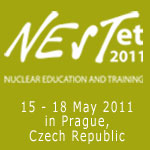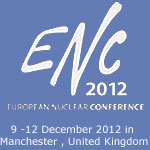
Nuclear Power Generation after 3-11

by Andrew Teller
The Fukushima accident that started on 11 March 2011 is an event of major importance although it is far too early to assess its actual consequences. It would be unthinkable to me to devote this column to anything other than this disaster which struck Japan and the nuclear industry in its wake. It gives the advocates of nuclear power generation (NPG) reasons to feel caught on the horns of a dilemma. On the one hand, the natural catastrophe that battered the north-western part of Japan was of an unprecedented magnitude. The total number of casualties resulting from the earthquake and the tsunami is now in the range of twenty-eight thousand and might still grow further. In such conditions, one might be tempted to think that when things go that bad, it is hardly surprising if industrial facilities do not fare well. On the other hand, it can be argued that the rule of the game has always been that nuclear power plants would be spared this worst scenario no matter what. But feeling torn between these two attitudes is nevertheless a luxury that only remote spectators can afford. It must be recognised that the nuclear consequences of the natural disaster did seriously worsen the plight of a Japanese population already terribly affected by the elements.
What the advocates of nuclear energy might think or hope or try to argue will be drowned in the reactions of the society at large. The future of nuclear power generation will keep being shaped in the usual political arenas but the reactions worldwide are far from homogeneous. Unsurprisingly, the opponents of nuclear energy have found in the Fukushima accident renewed grist to their mill and some governments have already taken measures against NPG under their influence. However, some commentators and industry analysts not linked to the nuclear industry are taking a view much more balanced than what could have been expected only a decade ago. They quite rightly point out that getting rid of nuclear energy is not going to be done overnight and that the known advantages of this energy source make it undesirable to do so. This situation is noticeably different from the one prevailing before the “nuclear renaissance”, when expressing anti-nuclear sentiment in the media was almost a fashion. In these peak-oil times, which attitude is going to prevail where is not easy to foretell. This is where more time is needed.
Since my focus has always been the cognitive aspects of the nuclear debate, I would like to offer the following provisional observations:
-
3-11 painfully confirms that past probabilistic safety analyses occasionally fail to take all relevant factors into account. In the case of Fukushima, the probability of a severe accident was not the result of the combination of the probabilities of malfunctions of the various components of the reactor safeguard systems under various scenarios. It turned out to be equal to the probability of incurring an earthquake bringing the reactor to a halt followed by a tsunami drowning the emergency power supplies. But how does one assess the probability of such an event without the benefit of hindsight? This tells me two things. First, even members of the NPG community will have to take care not to fall prey to the hindsight bias. They should bear in mind the title of a recent book by Duncan Watts: “Everything is obvious (once you know the answer)”. Second, a purely probabilistic approach to safety is not sufficient if we are to comply with the above-mentioned “no severe accident no matter what” rule. Past history shows that, if we are able to identify the worst cases we must protect ourselves against, we are much less able to identify all the relevant accidental sequences that can lead to them. Since different accident scenarios carry different probabilities of occurrence, a deterministic approach is needed to guarantee that the situation will not run out of control if a safeguard function is lost, even if we have not identified precisely all the scenarios liable to lead to it.
-
The Fukushima catastrophe illustrates once more the asymmetry of the respective stances of the critics and supporters of NPG. As far as I can tell, the anti-nuclear organisations have always underlined the seismic threat to nuclear power plants (NPPs) in Japan but have been much less vocal about the tsunami risk. In the present case, the NPPs weathered out the earthquake very well only to be overcome by the natural threat that they had not underlined. So, in a way, the critics of nuclear energy were quite mistaken in the appraisal of the risks incurred. Nevertheless, it is the NPP planners who are in the hot seat; the opponents of nuclear energy have no responsibility to take for the gap in their own analysis. The sad conclusion from this observation is that forecasting disasters seems to be a winning strategy: one can rest assured of being confirmed by the facts … eventually. But is this a sound strategy for making decisions? This question might also be hotly debated in the coming months. Furthermore, while the problems caused by NPG in the present circumstance are glaring, the drawbacks of alternative solutions will remain for ever hidden in the haze of counterfactual thinking: what would have happened if Japan had followed the recommendations of the opponents of nuclear energy and opted for wind machines instead of NPPs? Wouldn’t the earthquake and the tsunami have combined their strengths to destroy all the wind-driven (on-shore and off-shore) generating capacity in the area where they struck? To what effect? Such questions deserve attention when trying to achieve a balanced assessment of the situation but I wonder if they will be considered at all.
-
Lots of investigations are sure to take place to assess whether the older plants in operation elsewhere are still fit to continue operating at an acceptable level of risk. Public opinion is keen to equate ageing with increased risk. This is to miss completely the point of all the plant life improvement and extension programmes performed in the world (the so-called PLIM/PLEX programmes). The real question is not whether a plant must reach retirement at any given predefined age but whether its performance in terms of risk can be improved to achieve the levels of the latest models designed. This is where all organisations dealing with NPG will have to undertake a large communication effort to overcome the prevailing misconception regarding ageing.
As mentioned above, no meaningful conclusion is possible at present. Let me offer one forecast in the meantime: the Fukushima accident will shed new light on Three Mile Island. Until 3-11, TMI was standing alone in its category. Much to our regret, we have now a second case of interruption of the core cooling function. No doubt highlighting the similarities and the differences between the two accidents will improve our understanding of both. |





